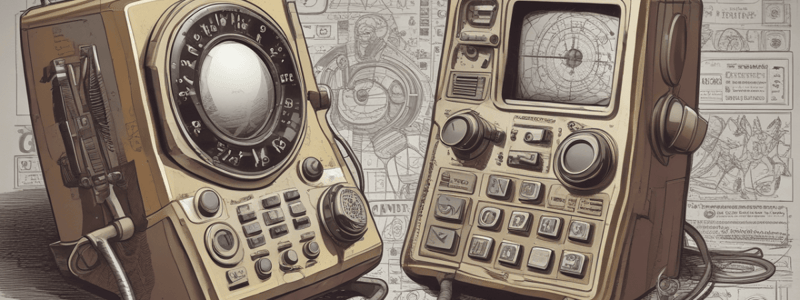Podcast
Questions and Answers
Which benchmark indicates that a team has entered the building?
Which benchmark indicates that a team has entered the building?
- Water on Fire
- Making Entry (correct)
- Primary Search
- Extrication Initiated
Which benchmark indicates that there is a team ready for deployment in case of emergencies?
Which benchmark indicates that there is a team ready for deployment in case of emergencies?
- Water Supply Established
- RIT Established (correct)
- Primary Search
- Fire Under Control
What does the benchmark 'Fire Under Control' signify?
What does the benchmark 'Fire Under Control' signify?
- The fire has been extinguished
- The fire is confined and not spreading (correct)
- No further resources are needed
- The scene is safe to enter
Which action is NOT listed as a benchmark?
Which action is NOT listed as a benchmark?
Which benchmark indicates the initiation of victim rescue from vehicles?
Which benchmark indicates the initiation of victim rescue from vehicles?
Which of these benchmarks indicates a completed task rather than the initiation of one?
Which of these benchmarks indicates a completed task rather than the initiation of one?
Flashcards
Communications Model
Communications Model
A communications model used to ensure receipt and acknowledgment of critical communications.
Initial Radio Report (IRR)
Initial Radio Report (IRR)
Provide basic information about the fire scene that will help incoming units take necessary actions.
360° Assessment
360° Assessment
A comprehensive evaluation of the scene, including potential hazards and rescue needs.
Follow-up Report (FUR)
Follow-up Report (FUR)
Signup and view all the flashcards
Benchmarks
Benchmarks
Signup and view all the flashcards
Resource Request
Resource Request
Signup and view all the flashcards
Study Notes
Communications
- A communications model is used to ensure receipt and acknowledgment of critical communications.
- The NATO phonetic alphabet is used to identify sides of buildings (e.g., Alpha, Bravo, Charlie, Delta).
- Remove unnecessary phrases and terminology from transmissions to keep them concise.
- Avoid "good news reporting", only report priority or pertinent information.
Pre Arrival
- Identify and request required resources to mitigate the incident effectively.
- Deliver Water Supply instructions prior to arrival when feasible, including rural water supply declaration.
Initial Radio Reports (IRR)
- Provide basic information that impacts incoming units' actions on the fireground.
- Include arriving unit(s), building size, height, type of occupancy, unique construction, smoke/fire conditions, establishment of Command, actions being taken, and instructions to incoming units.
- Use the IDéal acronym to structure the report:
- I - Identify arriving unit(s)
- D - Describe what you see
- E - Establish Command
- A - Actions
- L - Let incoming units know what you want them to do
360°
- Complete a 360° assessment of the scene, or advise what you have seen if unable to complete.
- Identify known or potential rescue, active and potential flow path of fire and fire gases, fire location and extent, structure size, construction, and age, and structural stability.
- Assess hazards and identify potential issues.
Follow-up Report (FUR)
- Provide updates on conditions and potential hazards after a 360° assessment.
- Use the CAN format:
- Conditions: updates on fire location and potential hazards
- Actions: confirm Operational Mode and Actions Taken
- Needs: request additional resources as needed
Benchmarks
- Key milestones to report during an incident:
- Making Entry
- Water on Fire
- Two-Out Established
- Water Supply Established
- Fire Under Control
- Primary Search
- RIT Established
- Extrication Initiated / Extrication Complete
Studying That Suits You
Use AI to generate personalized quizzes and flashcards to suit your learning preferences.




